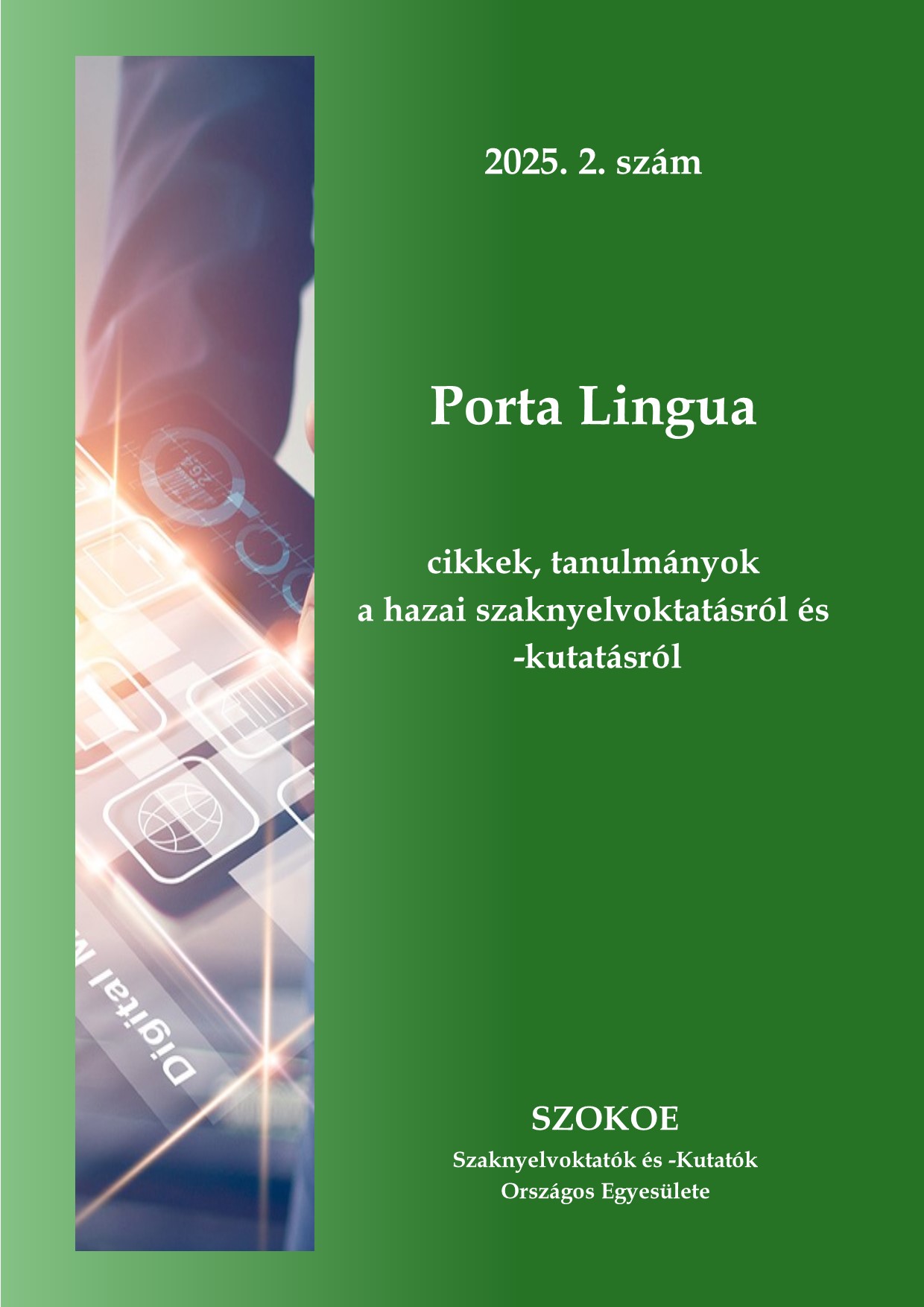Gamification in teaching economic terminology in English: A stock market simulation
Abstract
The study investigates the gamification potential of the stock market simulation platform operated by the economic information portal Investopedia. The following three research questions are addressed: (1) How can the simulation platform be used in teaching economic terminology in English? (2) What are the terms that comprise the terminological minimum that is absolutely necessary for the simulation? (3) Which components of gamification does the platform rely on and which are the ones that are missing? After a detailed analysis of the website, the terms used in the platform were cross-referenced with those in stock trading textbooks to identify a shortlist of terms that are essential for successful trading in the software. The investigation led to the conclusion that Investopedia's platform cannot be considered a full-fledged gamified system; however, it can be described as a simulation game that incorporates several essential components of gamification, and as such, it can be efficiently utilized in teaching economic terminology.
References
Dale, T. (2022): Stock Investing With Volume Profile (The Insider's Guide To Trading). (magánkiadás).
Bence, B. (2017): A sikeres kereskedő. Vételi és eladási pontok, stratégiák, tőzsdepszichológia. Budapest: Portfolió
Dávidovics, A. (2021): Szaknyelvoktatás és gamifikáció. Porta Lingua. 2021/1. 21-33. https://doi.org/10.48040/PL.2021.2
Deterding, S. – Dixon, D. – Khaled, R. – Nacke, L. (2011): From Game Design Elements to Gamefulness: Defining "Gamification" In: Proceedings of the 15th. International Academic MindTrek Conference: Envisioning Future Media Environments. 9-15. ACM: New York, NY, USA https://doi.org/10.1145/2181037.2181040
Fromann, R. (2017): Játékoslét. A gamifikáció világa. Typotex: Budapest
Figueroa-Flores, J. F. (2015): Using Gamification to Enhance Second Language Learning. Digital Education Review. 27/21. 32-54. https://doi.org/10.1344/der.2015.27.32-54
Gardner, R. C. (2006): Motivation and Second Language Acquisition. Paper presented at the Seminario Sobre Prurilingüismo: Las Aportaciones Del Centro Europeo de Lenguas Modernas de Graz. Universidad de Alcalá, Spain. Online elérhető. http://publish.uwo.ca/~gardner/docs/SPAINTALK.pdf. (Letöltés ideje: 2024. december 12.)
Kapp, K. M. (2012): The Gamification of Learning and Instruction: Game-based Methods and Strategies for Training and Education. Pfeiffer: San Francisco
Kovács, T. – Várallyai, L. (2018): Gamifikáció, avagy a játékosítás szerepe napjainkban. International Journal of Engineering and Management Sciences. 3/3. 171-180. https://doi.org/10.21791/IJEMS.2018.3.14.
Kiryakova, G. – Angelova, N. – Yordanova, L. (2014): Gamification in Education. 9th International Balkan Education and Science Conference At: Edirne, Turkey, Conference Paper. Elérhető online: https://www.researchgate.net/publication/320234774_GAMIFICATION_IN_EDUCATION Online elérhető. (Letöltés ideje: 2024. December 12.)
Murphy, J. J. (1999): Technical Analysis of the Financial Markets: A Comprehensive Guide to Trading Methods and Applications. New York Institute of Finance: New York
Nagy, A. (2020): Tőzsdei anomáliák. Többlethozamot eredményező összefüggések. Elemzésközpont.hu: Budapest
Penn, A. Z. (2022): Fundamental Analysis for Beginners: Grow Your Investment Portfolio Like A Pro Using Financial Statements and Ratios of Any Business with Zero Investing Experience Required. (magánkiadás)
Polonyi, T. – Abari, K. (2017): A gamifikáció lehetőségei a nyelvtanulásban. In: Polony, T – Abari, K. (szerk.) (2017): Digitális tanulás és tanítás. Debreceni Egyetemi Kiadó: Debrecen. 159-187
Prensky, M. (2001): Digital Natives, Digital Immigrants. On the Horizon. The International Journal of Learning Futures. 9/5. 1-6. https://doi.org/10.1108/10748120110424816
Richards, C. – Thompson, C. W. – Graham, N. (2014): Beyond designing for motivation: the importance of context in gamification. In: CHI PLAY '14: Proceedings of the first ACM SIGCHI annual symposium on Computer-human interaction in play. Association for Computing Machinery: New York. 217-226. https://doi.org/10.1145/2658537.2658683
Schwager, J. D. (1999): Getting Started in Technical Analysis. Wiley: New York
Thomsett, M. C. (1998): Mastering Fundamental Analysis: How to Spot Trends and Pick Winning Stocks Like the Pros. US: Deaborn Financial Publishing
Werbach, K. – Hunter, D. (2020): For the Win. The Power of Gamification and Game Thinking in Business, Education, Government, and Social Impact. Wharton School Press: Philadelphia.
Internetes hivatkozások
Investopedia. https://www.investopedia.com/
Jenkins, R. (2016): 12 Striking Statistics About How Generation Z Is Using Technology. https://www.ryanjenkins.com/blog/12-striking-statistics-about-how-generation-z-is-using-technology. (Letöltés ideje: 2024. december 19.)
Marczewski, A. (2014): Defining gamification – what do people really think? www.gamified.uk/2014/04/16/defining-gamification-people-really-think. (Letöltés ideje: 2024. december 13.)
ZBD (2024): Gen Z Gamer Study. https://22682105.fs1.hubspotusercontent-na1.net/hubfs/22682105/GenZGamerReport_Final.pdf. (Letöltés ideje: 2024. december 19.)
Zucchi, K. (2023): 4 common active trading strategies. https://www.investopedia.com/articles/active-trading/11/four-types-of-active-traders.asp. (Letöltés ideje: 2024. december 23.)



